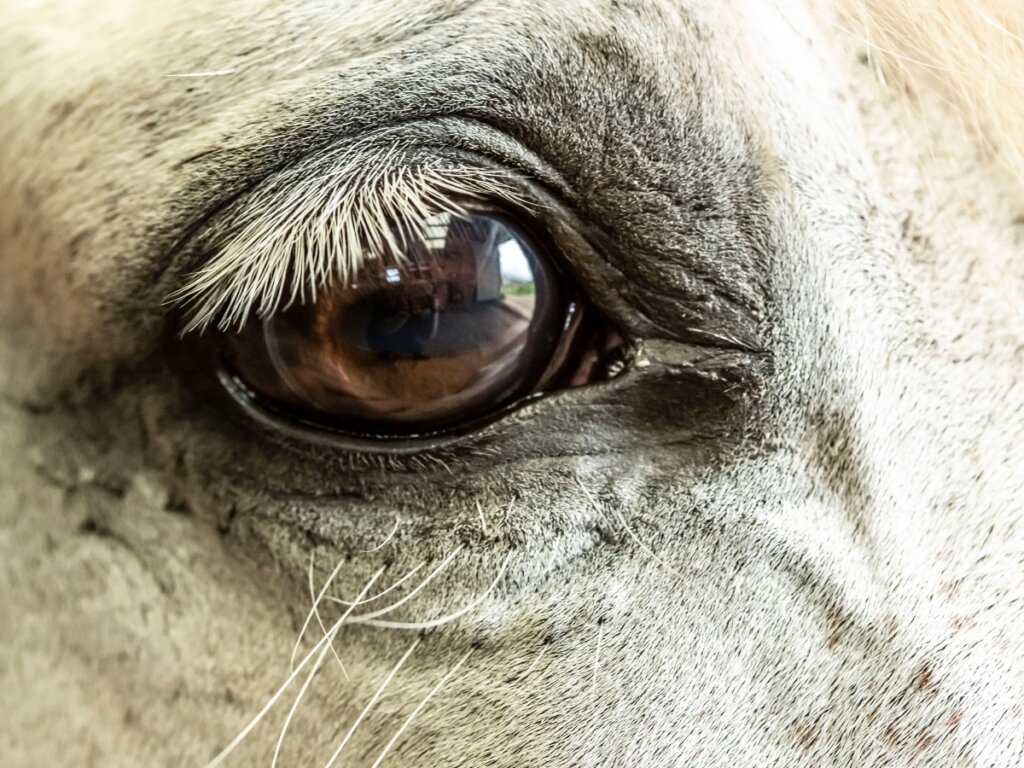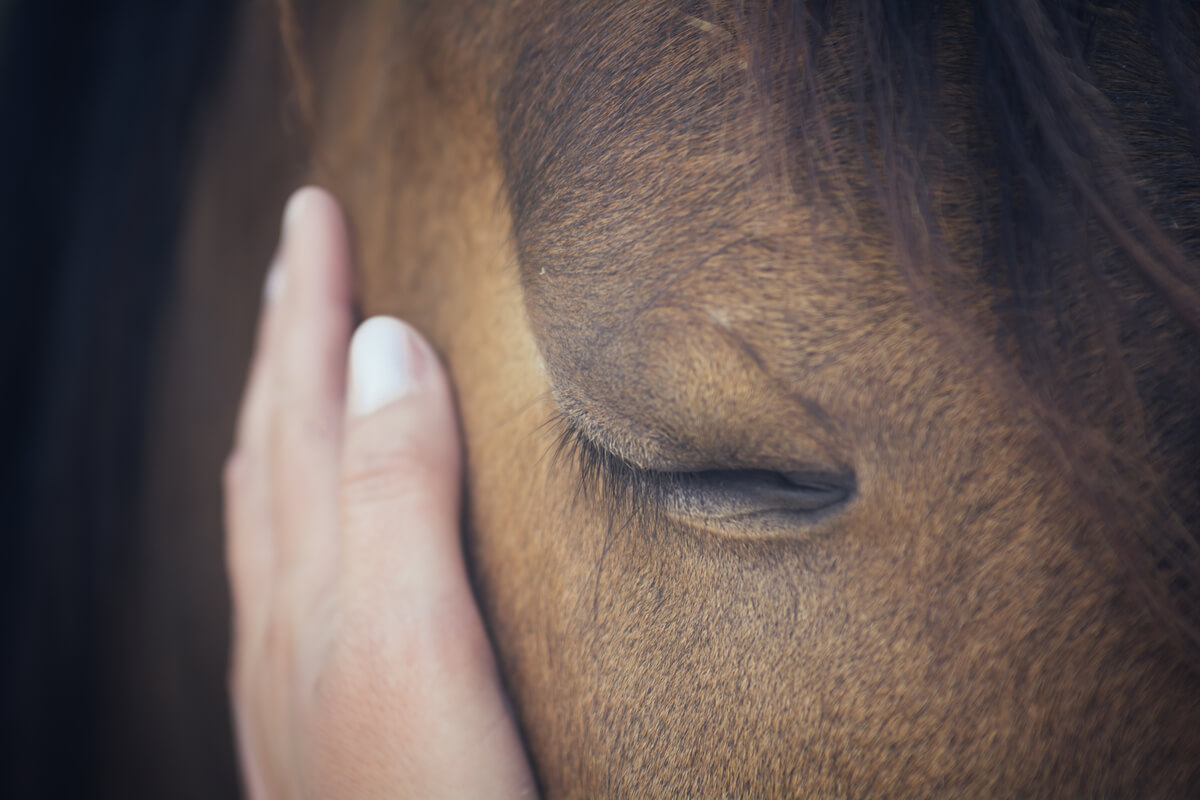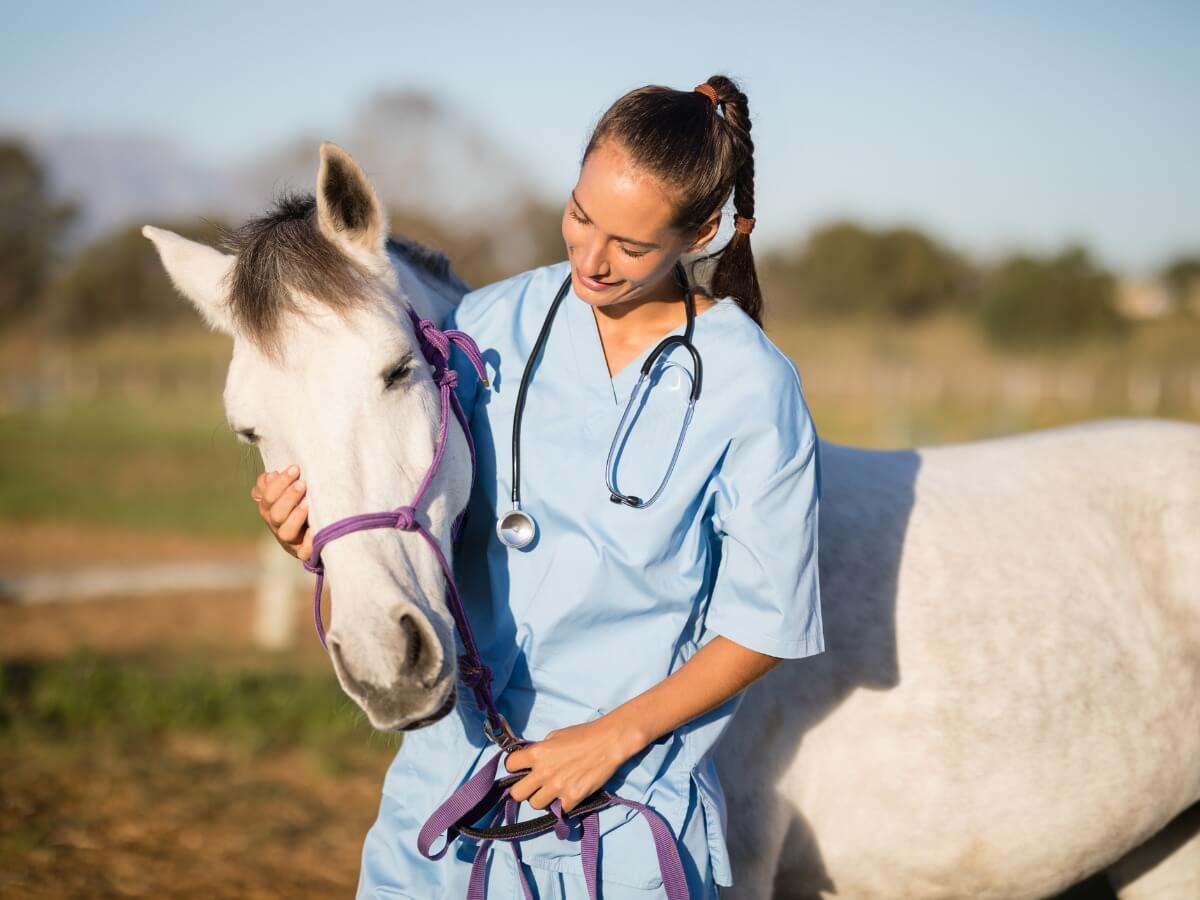Glaucoma in Horses: Causes, Symptoms and Treatment

Horse eyesight is excellent and allows them to distinguish objects from near and far, both during the day and at night. This isn’t surprising as they’re potential prey in their natural environment, and have to be on constant alert to watch out for predator attacks. Glaucoma in horses is a condition that, little by little, takes away their sight.
The majority of the horses affected by this ocular condition are over 15 years of age – 65% of them – although it has been detected in animals between 5 and 35 years of age, especially in the Appaloosa breed and the American Quarter. If you want to know more about glaucoma in horses and how to detect it before it’s too late, read on.
What is glaucoma in horses?
The term “glaucoma” refers to a series of conditions that always have one thing in common: increased pressure within the eye or intraocular pressure (IOP). Due to poor drainage of fluid from the eyeball (aqueous humor), the optic nerve is gradually damaged until vision is completely lost.
In horses, immediately after the iris, we find the ciliary body, which produces the aforementioned aqueous humor. This fluid provides metabolic support to the back of the cornea and keeps the internal structures of the eye functional. Once it has traveled, the aqueous humor drains from the eye through the uveoscleral or iridocorneal exit pathways.
The problem occurs when the drainage of the aqueous humor isn’t carried out correctly and the fluid accumulates, either due to a congenital malformation or an external influence. According to professional studies, these are the most common damages in glaucoma in horses:
- Hypercellularity of the optic nerve (98% of cases): This is a pathological increase in the number of cells of this nervous tissue. Represents constant and serious damage, caused by increased intraocular pressure in the horse (IOP).
- Retinal atrophy (89%): This results in loss of vision typical of the condition.
- Corneal vascularization (83%): Blood vessels infiltrate the cornea (which normally doesn’t have any) and the horse’s vision drastically worsens.
The incidence of glaucoma in horses is low, and is estimated at 0.07% of domestic horses.

Types of glaucoma in horses
Glaucoma can be classified according to its etiology. Here are the variants of this condition in horses.
Primary glaucoma
This is an inheritable condition that arises as a result of a malfunction of the aqueous humor drainage system. This variant is very rare in horses, as these animals have both a conventional and unconventional drainage system. Without going into complex terminology, it’s enough to know that primary glaucoma in equines is less common than in dogs and humans.
Secondary glaucoma
Most cases of glaucoma in horses are preceded by a previous disease in the animal. Many conditions are linked to recurrent equine uveitis (ERU), a condition in which the uvea of the animal’s eye becomes inflamed in a sustained and repeated way over time. Other causes may be the following:
- Intraocular tumor
- Corneal perforations
- Intraocular lens luxation
Glaucoma symptoms in horses
Most of the initial symptoms are very difficult to register, both in horses and in other animals. For this reason, glaucoma is also known as the “silent disease”, as you only begin to notice that something is wrong when the condition is already very advanced.
The first signs are the following: slightly dilated pupils, redness of the eyes, and elongation of the eyeball. After these initial symptoms, the most serious ones are established. Among them, we highlight the following:
- A very dilated, completely immobile, or very slow-moving pupil.
- Very noticeable redness in the white part of the animal’s eye (sclera).
- Swelling and discoloration of the cornea. Put colloquially, it appears that an opaque lens has been placed on the horse in the affected eye.
- An eyeball that is firmer than normal.
Diagnosis
As studies indicate, the diagnosis of glaucoma in horses is made based on the symptoms described by the owner and on the measurement of the patient’s intraocular pressure (IOP). Normal IOP in equines varies depending on the instrument used and the context, but it’s generally between 17 and 28 mmHg. This measurement is carried out with special tonometers.
The mean intraocular pressure in horses with glaucoma is almost 40 mmHg. Once the condition has been detected, an extensive examination of both eyes of the equid should be performed to detect the possible cause of poor drainage within the affected eye.
Treatment of glaucoma in horses
Treatment of this condition often requires both a pharmacological and a surgical approach. It all depends on the following parameters:
- Presence or absence of vision.
- If there’s a concurrent disease other than glaucoma.
- Age and general condition of the horse.
- Economic factors of the owner.
- The ease of establishing treatment.
Unfortunately, most horses with glaucoma come to the clinic when the eye is already badly damaged, especially if the cause is recurrent equine uveitis. In these cases, the response to therapy is usually very low and the animal is not expected to regain lost vision, but they can help to stop it from getting worse.
As far as medications are concerned, timolol maleate and dorzolamide are usually prescribed topically in conjunction. These drugs decrease the production of aqueous humor and promote the drainage of excess fluid from the eye. If this doesn’t work, you can resort to filtering processes and different types of eye surgeries.

As you may have seen, glaucoma in horses is a very rare condition and difficult to detect in the vast majority of cases. You can’t regain the sight that the animal has lost, but fortunately, it’s possible to prevent it from going completely blind.
All cited sources were thoroughly reviewed by our team to ensure their quality, reliability, currency, and validity. The bibliography of this article was considered reliable and of academic or scientific accuracy.
- Michau, T. M. (2017). Equine glaucoma. Veterinary Clinics: Equine Practice, 33(3), 519-540.
- Rizzo, D. (2017). Idiopathic glaucoma in an 11-year-old crossbred mare. The Canadian Veterinary Journal, 58(5), 508.
